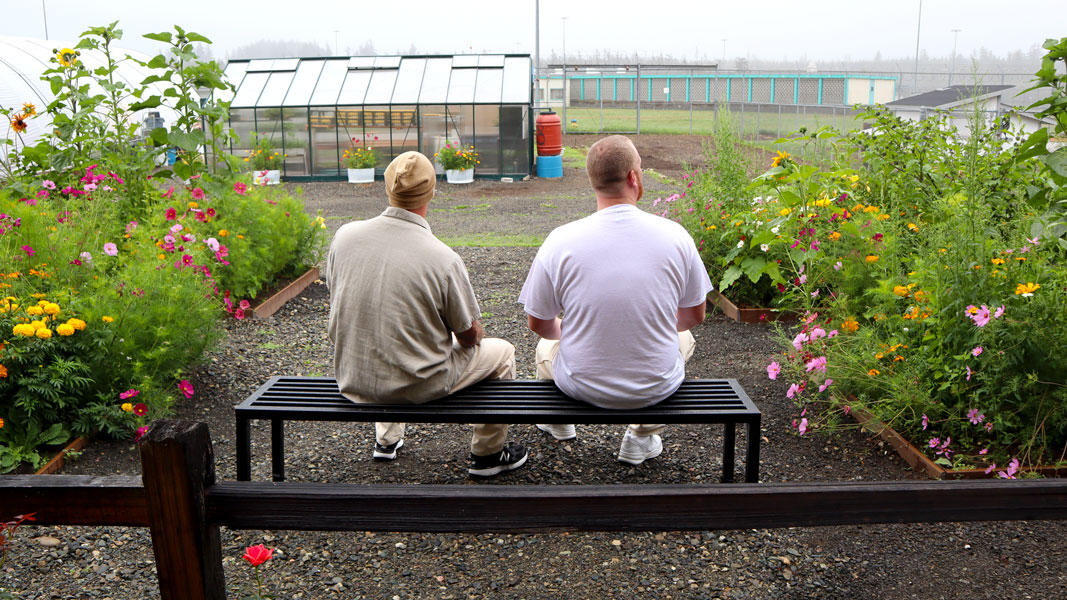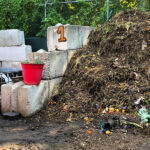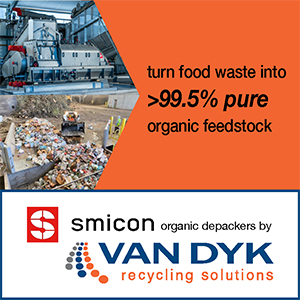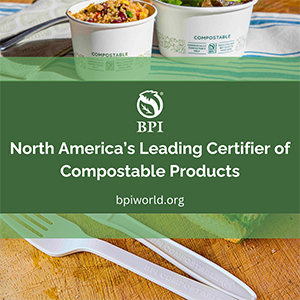Top: Compost made at the Shelton Prison (Washington state) is used as a soil amendment in the gardens. Photo courtesy the Sustainability in Prisons Project
 Sally Brown
Sally Brown
The connection between compost and crime isn’t normally obvious. Exception being, of course, that it is truly a crime not to compost food waste. As we all know, a rind is a terrible thing to waste. But there are connections.
In this instance, when I am talking about crime, I am not talking about the morally reprehensible practice of putting food scraps into landfills. I should note this practice is actually encouraged by many municipalities. Rather, I am talking about crime in the cops and robbers sense of the word.
Recidivism Reduction
We can start behind bars. Composting in prisons had been talked about multiple times both in this column and in BioCycle. Statistics from programs such as the Sustainability in Prisons Project in Washington State have shown that exposure to nature and natural systems is a highly effective tool for both improving the well-being of incarcerated individuals as well as reducing rates of recidivism. Composting is one of the programs that the Sustainability in Prisons Project sponsors.
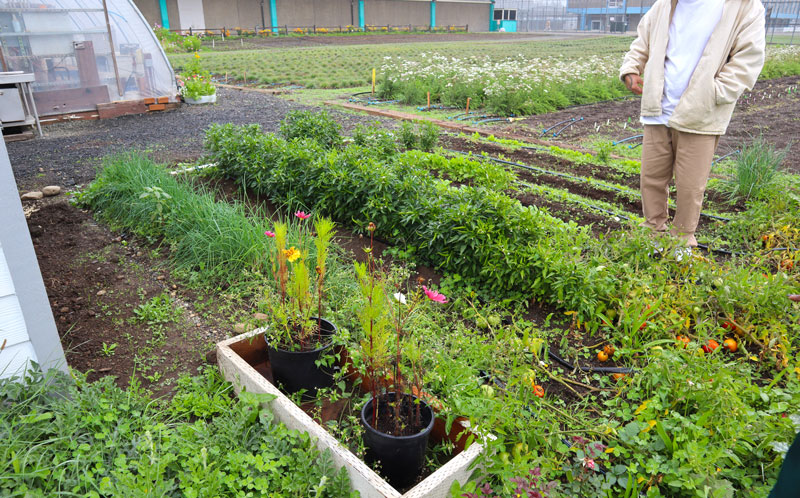
Exposure to nature and natural systems both improves the well-being of incarcerated individuals as well as reduces rates of recidivism. Photo at the Shelton Prison courtesy of Sustainability in Prisons Project
By keeping formerly incarcerated individuals out of prison and actively participating in communities, social health and the bottom line are both improved. Jail is far from cheap. Keeping people in prison costs money to taxpayers both directly and indirectly. California is a good example. It costs over $64,000 per year per individual for accommodations that no one would choose. Many of the prisons in California offer gardening and composting programs. If the reduction in recidivism because of composting and other sustainability programs is anywhere near what has been reported in Washington, you see a decrease from 60% to 18%, or over a 66% reduction. For every 10 incarcerated folks, you can estimate that instead of six coming for a return stay, only three make the journey back. For those three who stay out, you’re effectively saving over $190,000 per year. In addition, they are now back likely making money rather than costing money. Formerly incarcerated persons are also likely active in their families and communities. In other words, that $190,000 a year is just a start.
Another benefit, though minor by comparison, is additional cost savings for facilities that compost in house. While you likely won’t reduce much in terms of methane emissions (California rules mandate that food scraps be composted), you likely also save some because you are composting in house rather than paying for the service.
What neighborhoods do they go back to? If you take the view that incarceration disproportionally impacts people of color and/or people with lower socioeconomic status (Bernie Madoff aside), the neighborhoods they go back to are not likely to be green and lush. They are also likely to have higher crime rates than other parts of cities. A number of studies have looked at what happens in cities when you take derelict lots and bring them back to beauty. You get a range of health benefits including reduced stress, reduced mortality, increased physical activity and improved moods (Kondo et al., 2018). You also see a reduction in crime including family violence (Branas et al., 2018; Fleckman et al., 2025). Branas et al found that greening urban abandoned lots reduced burglary by 22%, gun violence by 29% and nuisance crimes by 30%. Overall, the study found that crime in general decreased by over 13%.
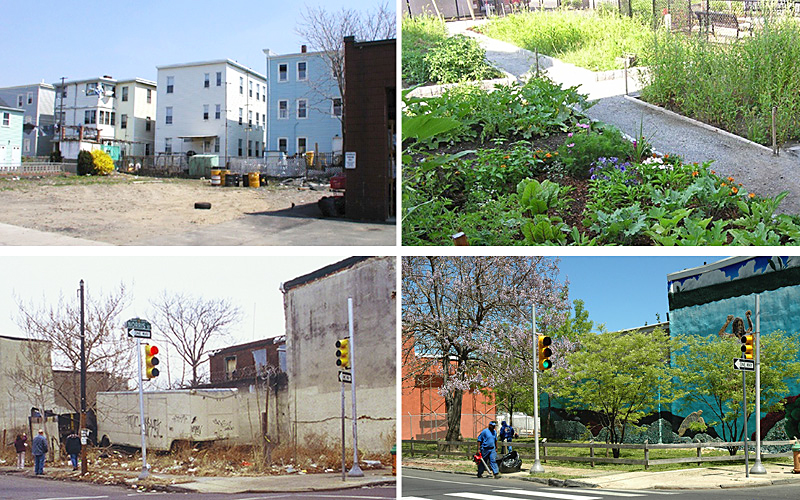
A study found that greening urban abandoned lots reduced burglary by 22%, gun violence by 29% and nuisance crimes by 30%. Top row: Brownfields (left) transformed into urban gardens (right) in Somerville, MA. Photos courtesy Ann Carroll. Bottom row: Vacant lot (left) becomes greenspace (right) in Philadelphia. Photos courtesy Pennsylvania Horticultural Society.
What is the best way to green up derelict properties? I imagine that you are starting to see the connection here. Compost is highly effective at making everything, including vacant lots, lovely again. It also does its part to reduce any hazards associated with contaminants in urban soils.
Cost Of Crime
I started with how much it costs to keep someone in prison. Now let’s move to how much it costs to get them there. While I cannot personally attest to whether or not crime doesn’t pay, I can tell you that it costs. Here we can focus on Los Angeles. While crime in many cities, including Los Angeles is down overall, it is still doesn’t come cheap. Property crimes (including burglary, motor vehicle theft and theft) in Los Angeles decreased in 2024 from 109,025 to 101,766. Robberies stayed the same (8,696). Gun violence decreased 19% to 1,184 (-225).
Down is good, but down is not the same as over and out. One study I found estimated the cost of crime per incident:
- Burglary–$13,096
- Aggravated assault–$87,238
- Robbery–$67,277
If you take those numbers and put them together with the Los Angeles annual crime report you get costs about $20 million north of $2 billion. Instead of using the 13% reduction in overall crime that was found in the peer reviewed study, we can look at a 1% reduction — what I would consider a very conservative assumption. With that 1% reduction in crime that comes with greening and maintaining decrepit lots, you have saved yourself $20 million. Enough to buy even more compost and save more money. And you could also employ many of those formerly incarcerated, well-trained gardeners and composters to do the job. Giving those formerly incarcerated individuals decent jobs might further reduce the rates of recidivism. Talk about a circular economy.
As we increasingly recognize the value of nature and being in it and part of it, we have to also recognize the real value of compost. As people, we make a lot of feedstocks. We have also wreaked havoc on much of our natural environment. As people who work with those feedstocks, it is important to expand our understanding of what compost is worth. That city manager who all of a sudden is required to buy and use compost (as is the case in California) may not instantly see the opportunities. Our job is to make those clear.
Sally Brown, BioCycle Senior Advisor, is a Research Professor at the University of Washington in the College of the Environment.


